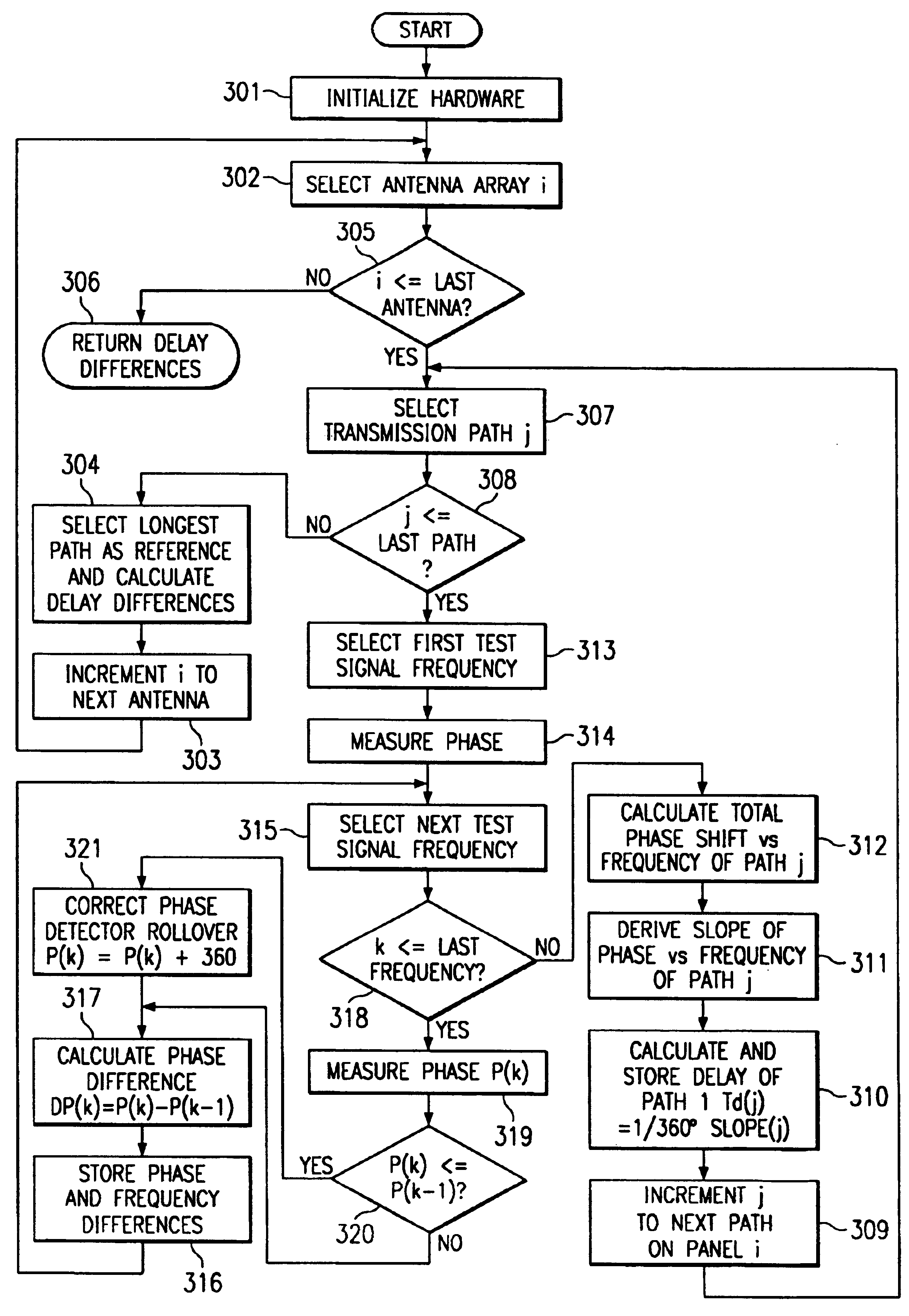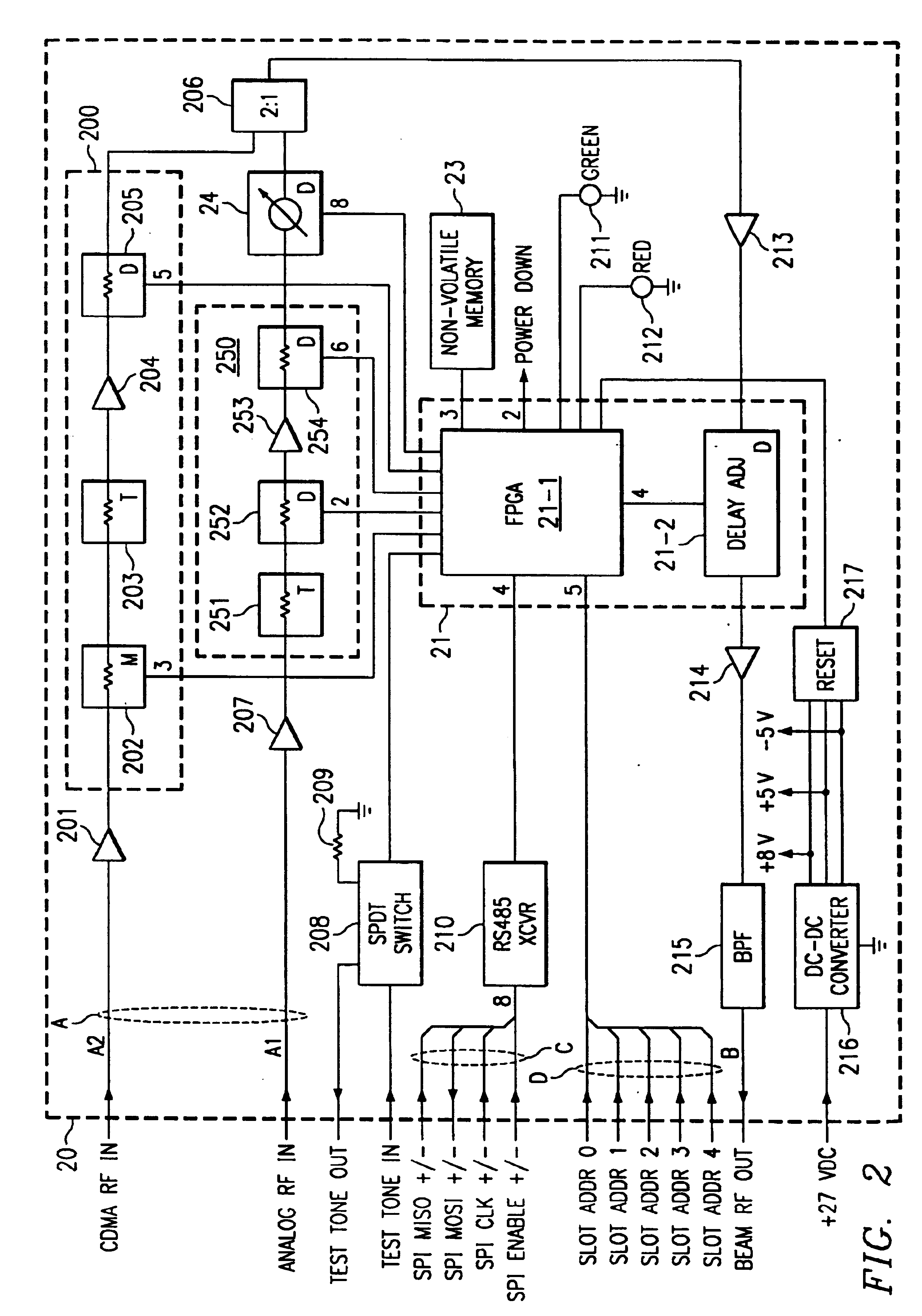System and method for delay equalization of multiple transmission paths
a delay equalization and transmission path technology, applied in the field of wireless communication systems, can solve the problems physical and/or electrical delay differences of multiple paths, and appreciable length of transmission lines, and achieve the effect of minimizing the effects of non-linear phase respons
- Summary
- Abstract
- Description
- Claims
- Application Information
AI Technical Summary
Benefits of technology
Problems solved by technology
Method used
Image
Examples
Embodiment Construction
[0025]A. Overview
[0026]With a preferred embodiment of the present invention, a system and method are provided for averaging the effects of non-linear phase response and equalizing the electrical delays among the transmission paths that feed a phased-array antenna. Transmission path delay equalization according to the present invention facilitates broadband phase calibration of multiple element arrays.
[0027]With a constant electrical delay, there is a linear relationship between phase change versus frequency change. Thus, delay can be derived by taking the derivative of phase as a function of frequency. Accordingly, delay can be estimated by averaging differences in phase versus differences in frequency over an acceptable frequency range and extracting a linear component from the phase versus frequency function over this range.
[0028]In one embodiment, phase calibration of a number of transmission paths is generally performed according to the following steps. Initially, information is...
PUM
 Login to View More
Login to View More Abstract
Description
Claims
Application Information
 Login to View More
Login to View More - R&D Engineer
- R&D Manager
- IP Professional
- Industry Leading Data Capabilities
- Powerful AI technology
- Patent DNA Extraction
Browse by: Latest US Patents, China's latest patents, Technical Efficacy Thesaurus, Application Domain, Technology Topic, Popular Technical Reports.
© 2024 PatSnap. All rights reserved.Legal|Privacy policy|Modern Slavery Act Transparency Statement|Sitemap|About US| Contact US: help@patsnap.com










